

When it comes to higher education SEO success stories, Southern New Hampshire University stands out. With more than 15 million annual visitors from organic search alone, their approach offers valuable lessons for university marketing teams.
Southern New Hampshire University is a private, nonprofit, accredited institution with more than 3,000 on-campus students and over 170,000 online students, making it one of the fastest-growing universities in the nation. SNHU is not, nor it has been a client of Manaferra in the past. All the data in this article is provided from third-party platforms.
In this analysis, we’ll break down SNHU’s most effective SEO strategies and show you how to adapt them for your institution. Whether you’re looking to boost program visibility or increase qualified traffic, these insights will help strengthen your organic search presence.
SNHU.edu gets an estimated 1.3 million visitors from organic traffic monthly. This traffic is only to their “marketing” website (www.snhu.edu) and doesn’t include their mySNHU student website (https://my.snhu.edu), which also receives close to 600k visits from Google every month.
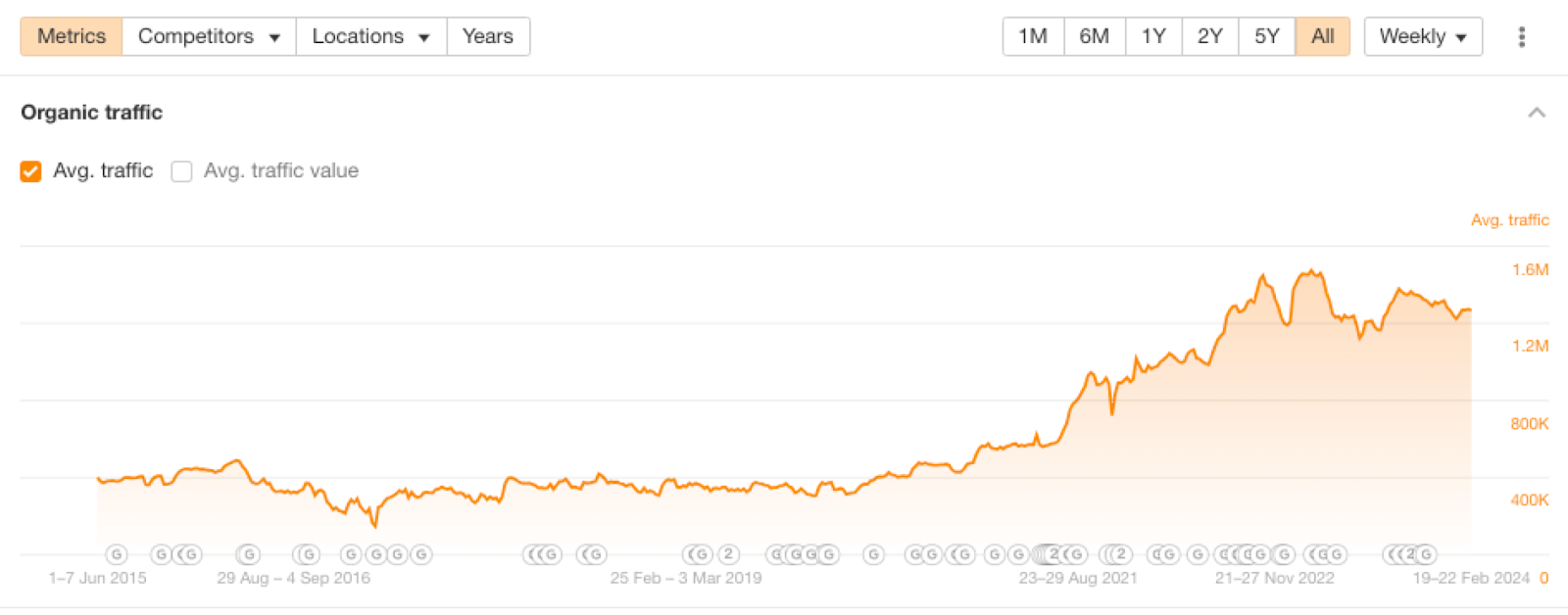
From the Ahrefs traffic chart above, we can see that the traffic started to increase in mid-2020. This makes sense because, during COVID-19, with campuses closed and learning moved online, SNHU was well-positioned to capitalize on this new search demand.
From an SEO point of view, something else that happened during this time was Google giving more weight to all .edu domains in their efforts to combat misinformation. SNHU was already investing in SEO, had all the right pages created to target the right keywords, and when this algorithmic update happened, their pages started to rank better gradually.
The biggest spike in their traffic came from the July 2021 Core Update. Their traffic increased by almost 60%, from 600,000/mo to 950,000/mo.
Another interesting data point is to look at their traffic by location. 73.4% of the traffic is coming from the United States, but they’re also getting significant traffic from India and the Philippines. This is normal; some of the content that will be published on the site will perform in markets outside the US as well, even if that is not part of the strategy. In SNHU’s case, this could be intentional since they are targeting international students as well.
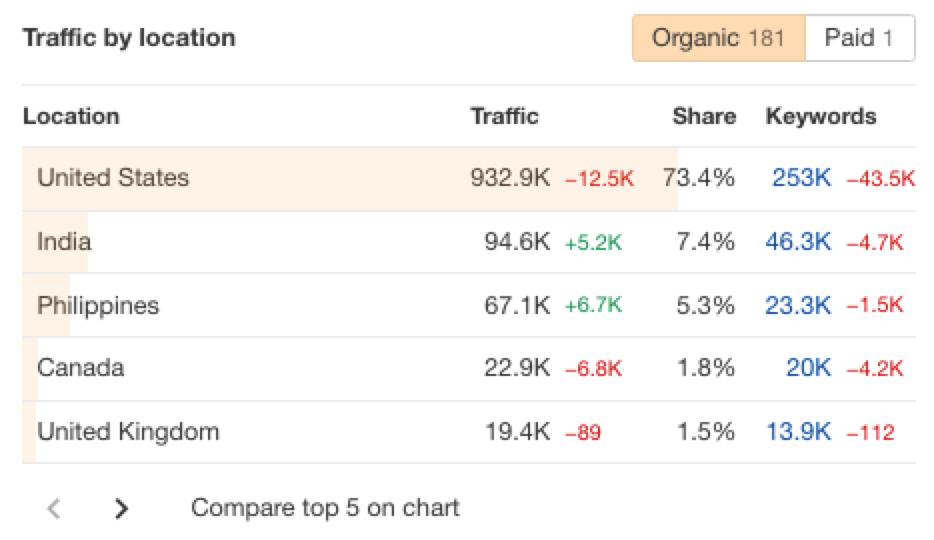
Organic traffic value is the equivalent monthly cost of traffic from all keywords that the SNHU.edu website ranks for organically if that traffic was paid via PPC instead.
Ahrefs calculates it by multiplying the monthly organic traffic of each keyword at its respective ranking position by its CPC value. Then, they add up the organic traffic cost of individual keywords that the target website/URL ranks for.
In essence, the number gives you a sense of how valuable a domain’s keyword profile is. Another way to think of it is how much money SNHU has saved in terms of ranking for keywords organically instead of buying paid traffic.
In their case, SNHU gets over $5.7m in traffic value for free (per month) because they’re ranking for hundreds of thousands of keywords and getting over 1.3m visitors per month.
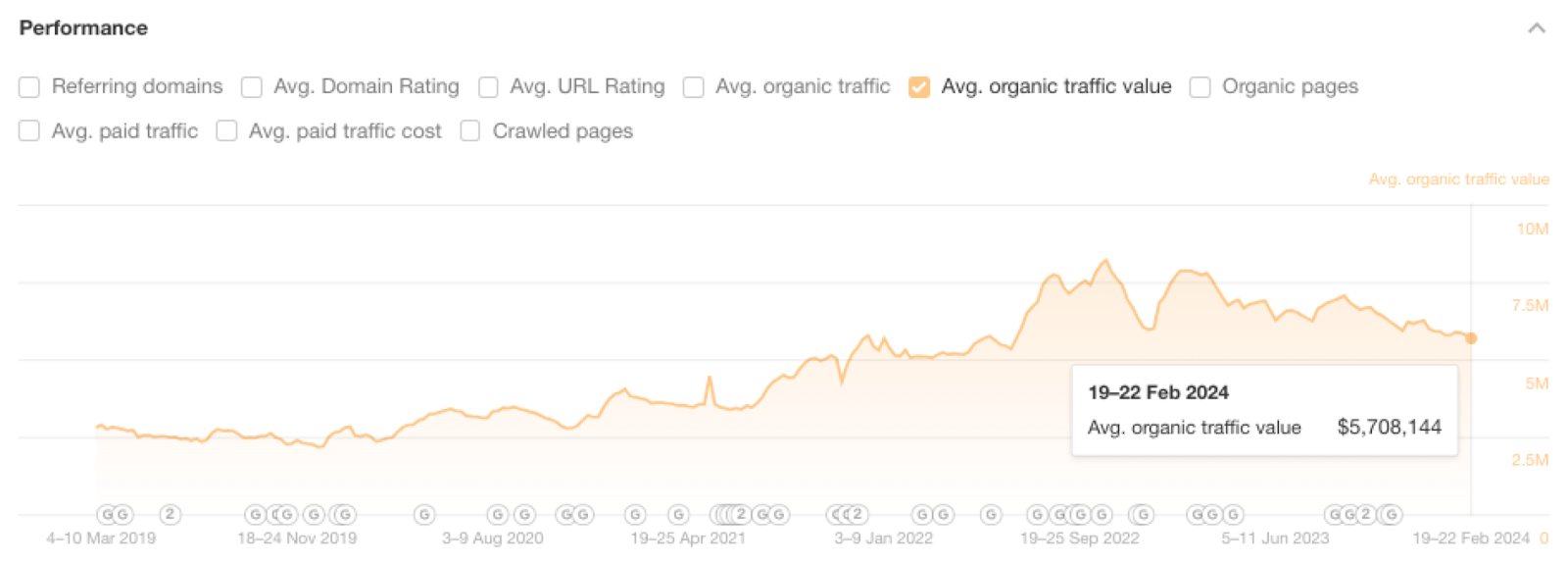
Here’s one example: their healthcare administration degree page gets over 6.3k clicks every month. They are ranking in top positions for keywords like:
If they had to advertise on Google Ads to get this traffic, it would cost them $137,000; instead, because they have a strong SEO presence, they’re getting this traffic for free.
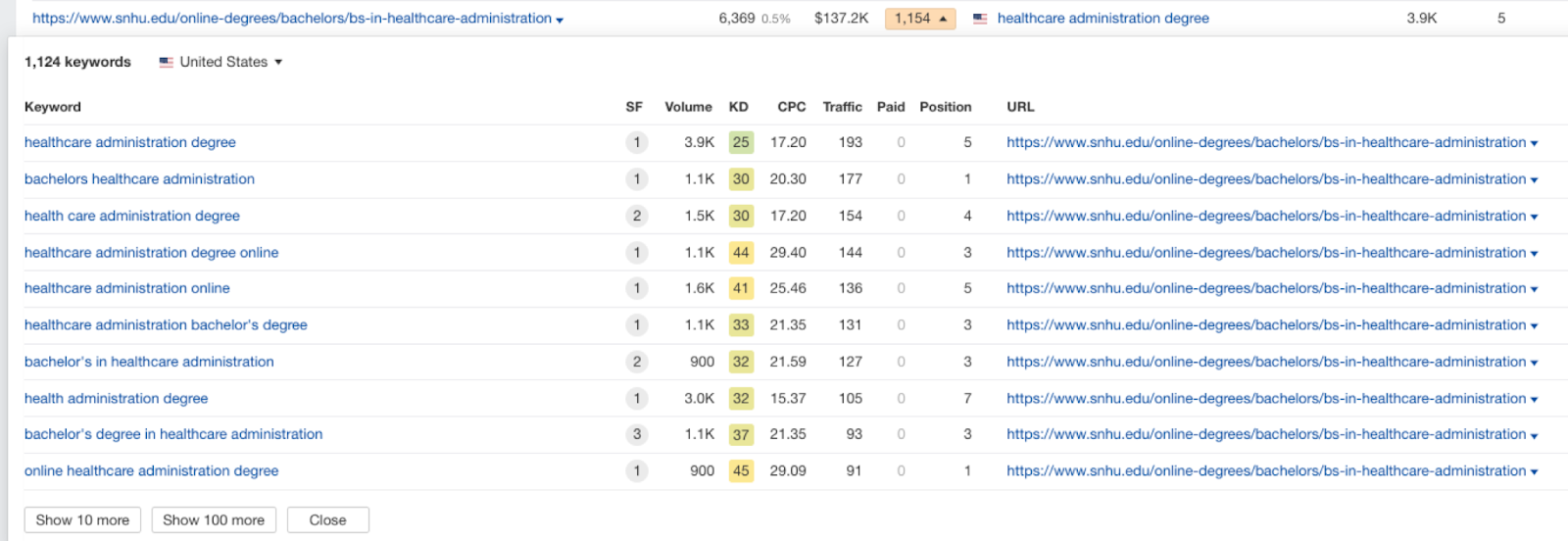
When we filter out the branded keywords, the traffic drops to 1m per month. This tells us that SNHU’s branded traffic is 23.07% of total traffic.
This is really good because, for most higher ed. institutions, the majority of their organic traffic is usually branded traffic.
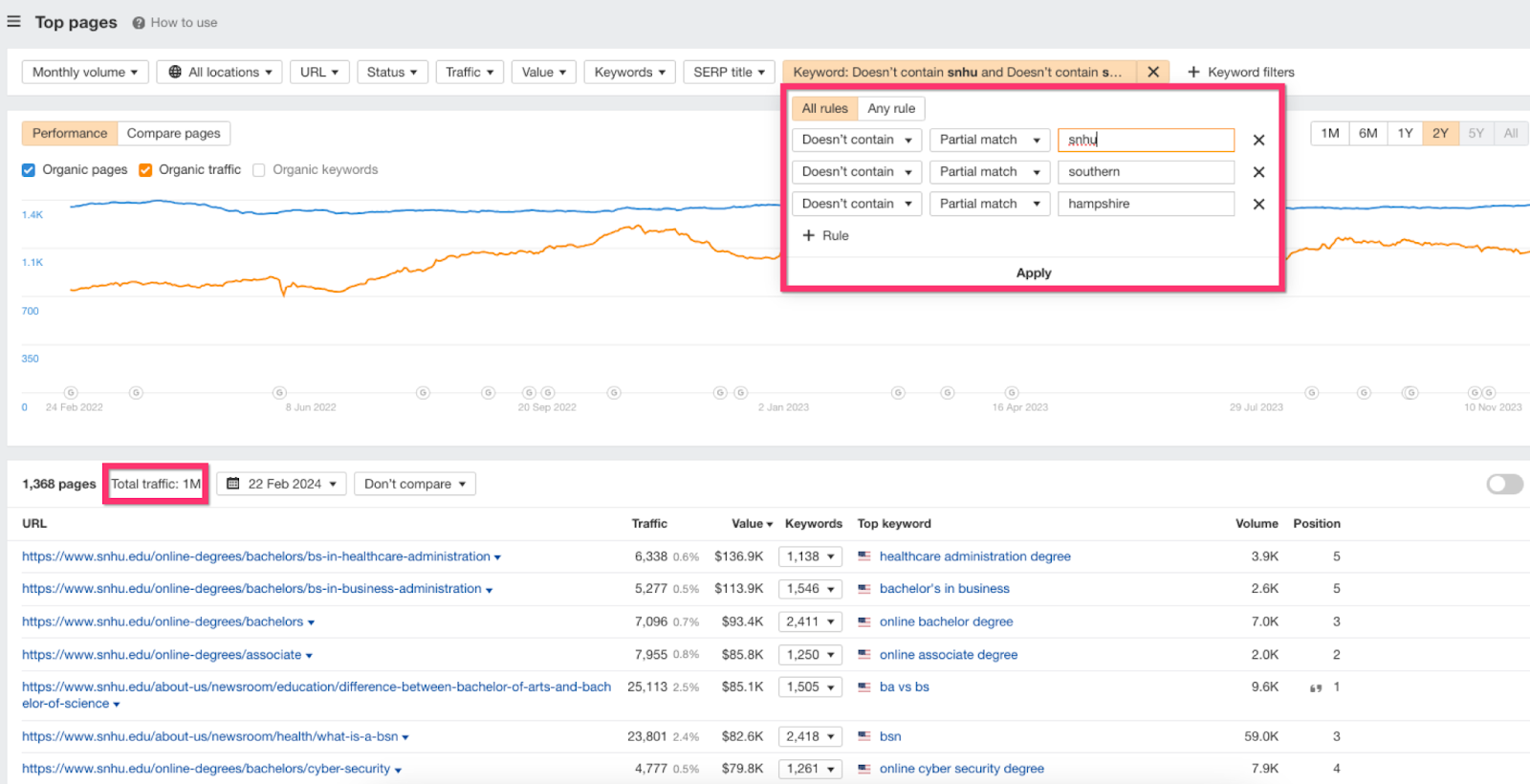
Branded traffic is usually from people who already know us; this could be existing students, alumni, etc. Branded traffic can also be impacted by offline marketing initiatives, which could drive more people to search for your institution.
In the case of SNHU, they’re getting 76.93% of their traffic every month from people who discover them not by searching their brand but by searching for programs and information they need, and SNHU offers. In SEO, this is the traffic you want to go after; these are new audiences that most likely haven’t engaged with your brand before and are interested in what you have to offer.
2. You need to know how much of your traffic is branded vs non-branded. The easiest way is to look at your Google Search Console property and to filter out all branded queries and see how this impacts the overall traffic.
Looking at their top pages by traffic, we notice something interesting: most of the top pages are not program pages but blog articles. This is intentional, and here’s why:
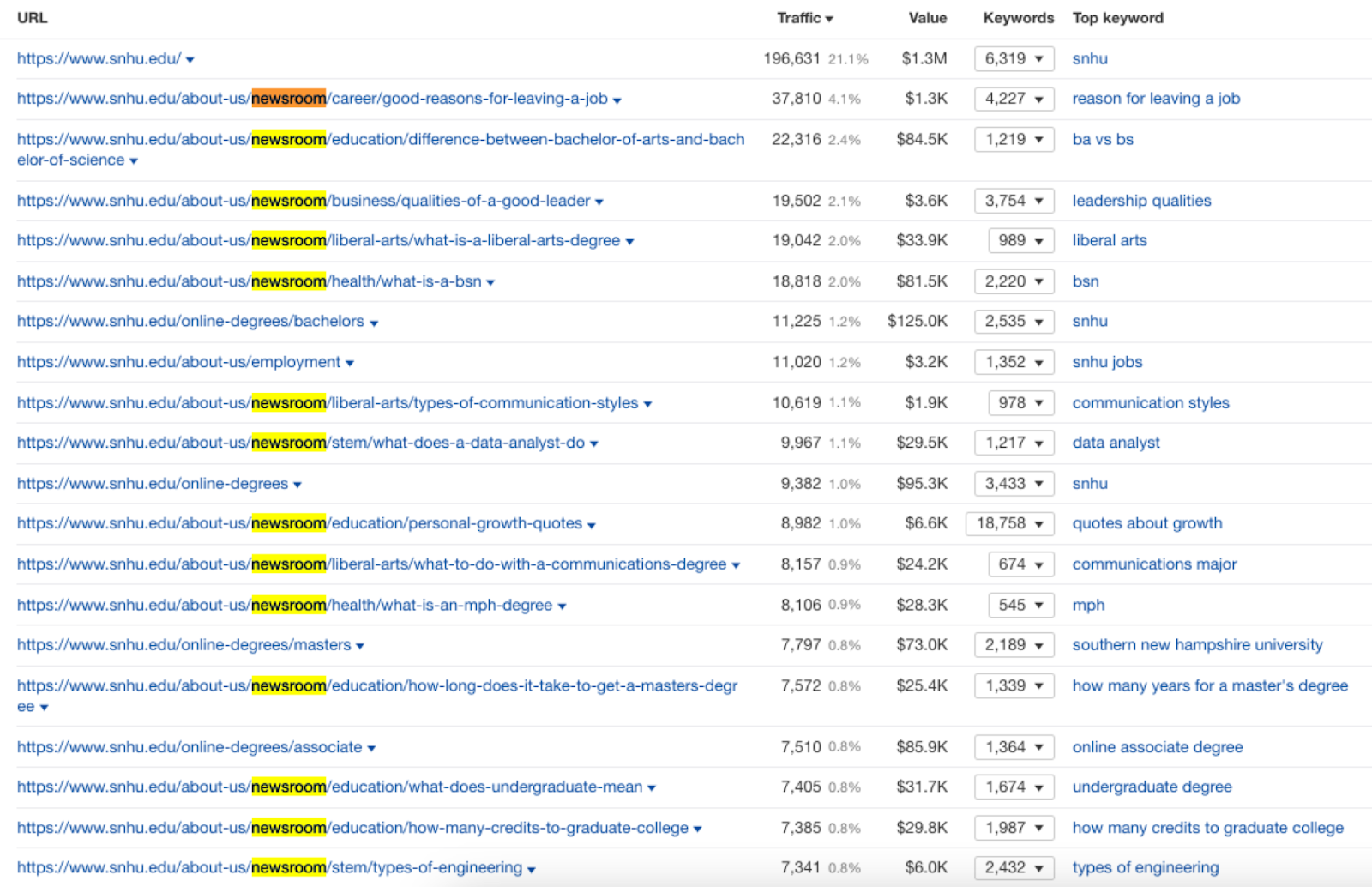
There are two important things here that we need to understand: how students search and the concept of search intent.
Our first instinct when thinking about the keywords we’d like to rank for would be to go after program-related keywords. And this is correct. However, we need to understand that there are thousands of other institutions going after the same keywords as well, so the competition is fierce.
We also neglect the fact that when a student starts considering getting a degree, they don’t immediately search for [master’s in cybersecurity] or [bachelor of social work]. They have questions, tons of them, and very often quite basic questions like [what is a BSN degree].
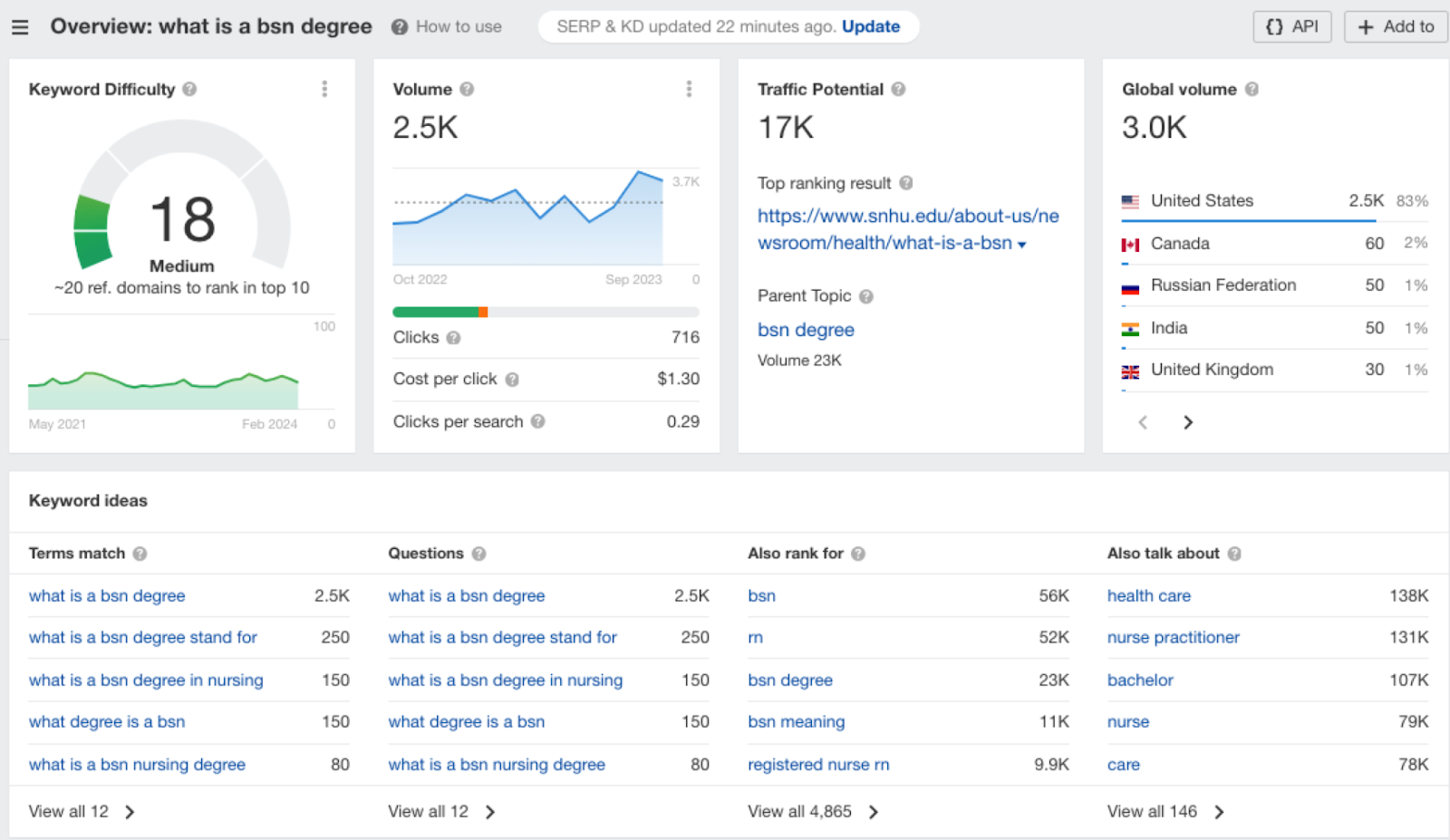
Once they start to educate themselves, they begin to refine their questions, and would probably search something like [is a BSN degree worth it] or [BSN vs RN].
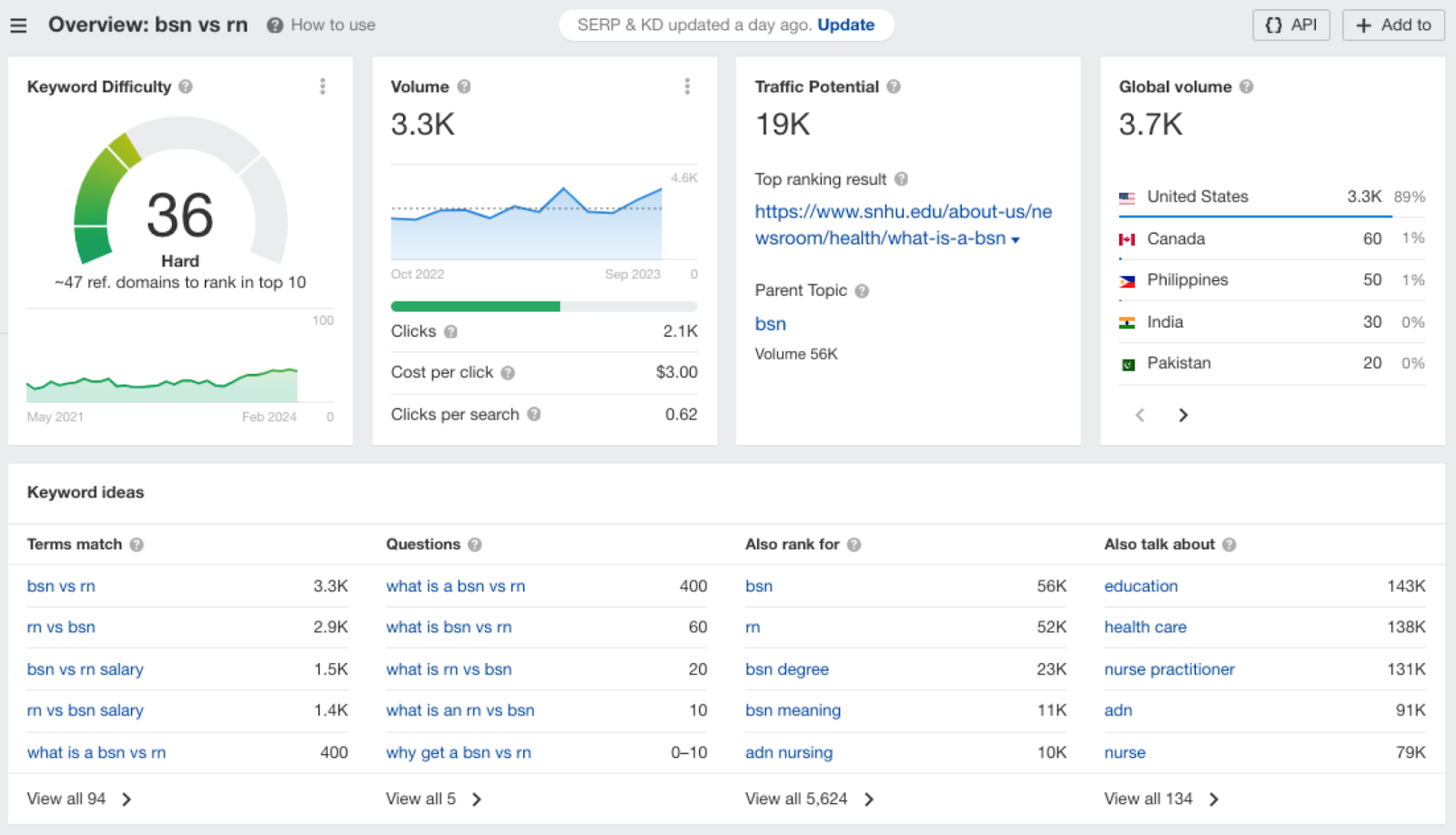
They have thousands of these questions, and they search for them hundreds of thousands of times every month on Google. SNHU has created a content library that provides answers to these questions, and because their content is quite good, they are able to rank and get in front of them earlier in their student journey.
Chances are that these students will engage with SNHU, request more information about their programs, and remember this positive experience (being educated on their questions) when the time comes to apply.
Search intent is the main goal a user has when typing a query in the search box. This is important for us because, in the Higher Ed. SEO space, it impacts what keywords we target with our program pages, and for what keywords we need to create informational (blog) pages.
If you search for [BSN degree – 23,000 searches/mo], you might think that Google will show you program pages offered by different institutions.
The reality is that Google will show you mostly blog articles and a few program pages at the bottom of the search results.
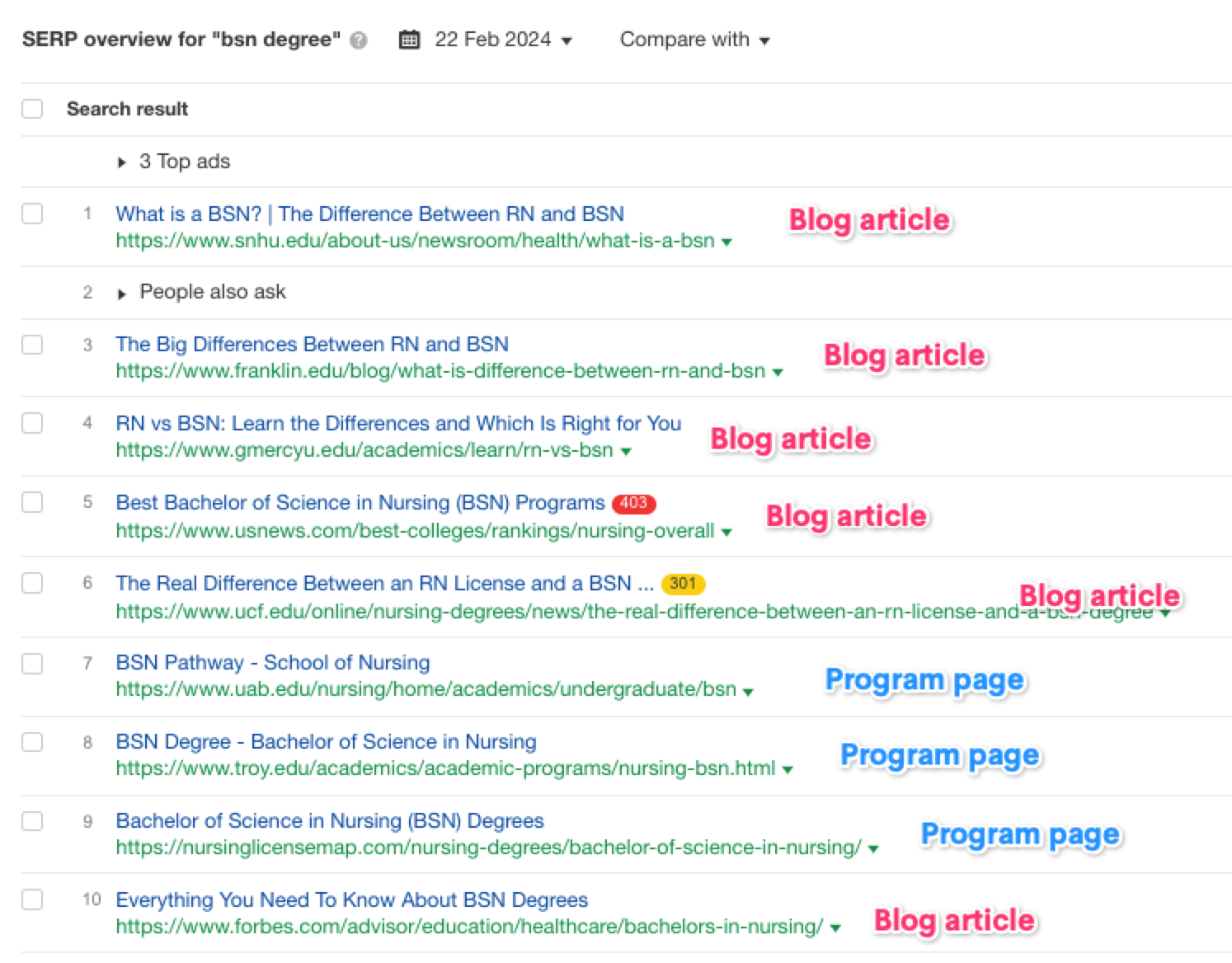
Google has determined that the search intent for this keyword is informational – someone searching for it is more likely to look for information about what is a BSN, the difference between RN and BSN, than to go to a program page.
You can repeat the search for keywords like [MBA degree] and [MSW degree], and the results will be similar.
When the query (keyword) is more specific, then Google starts to refine the search results, to better answer the search intent. Here’s what Google shows when you search for [bachelor of science in nursing – 2,900 searches/mo].
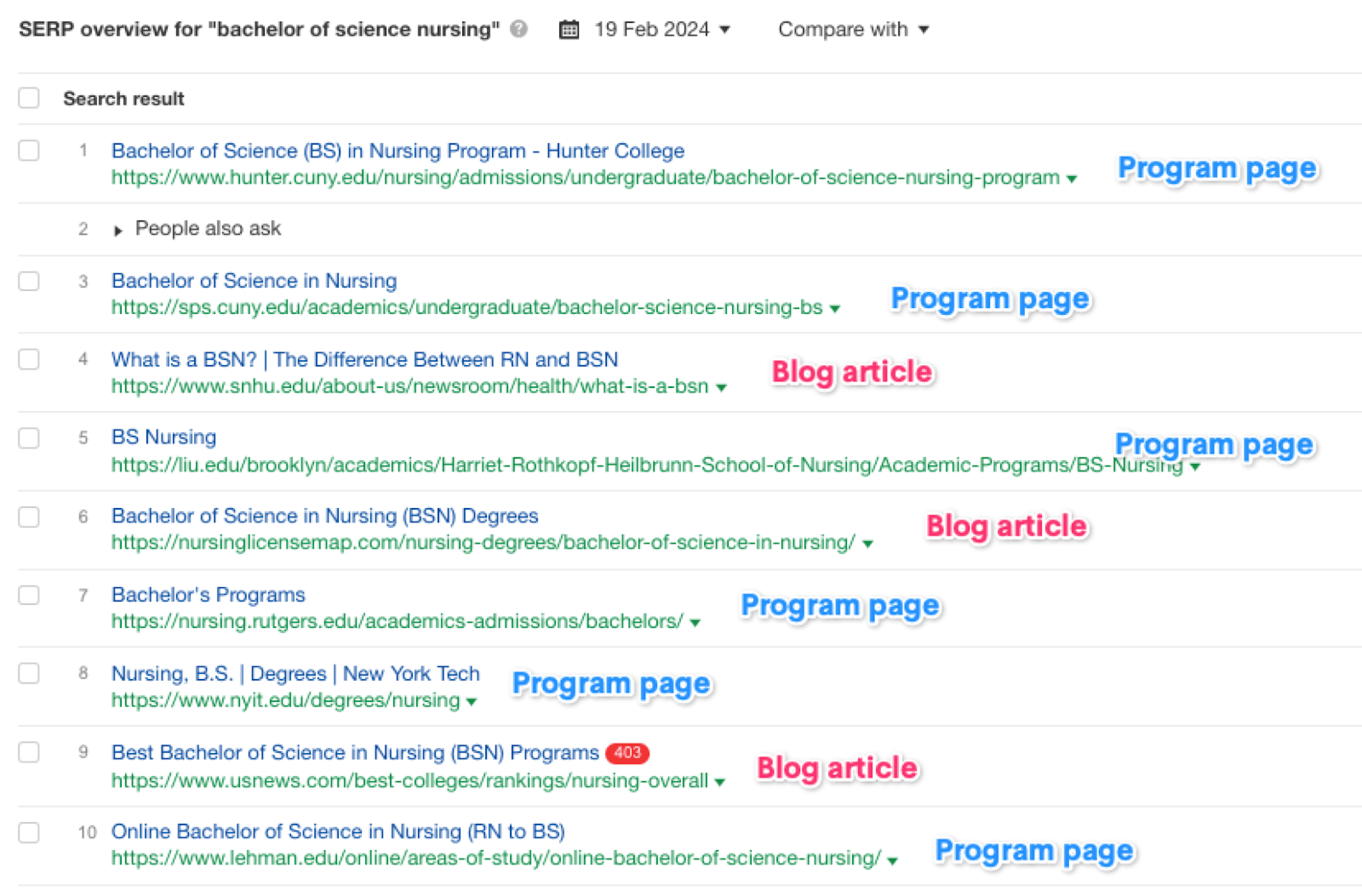
This is the reason why content marketing (blog) is an important part of your SEO strategy. It allows you to rank for keywords that your target audience is searching for thousands of times every month. You wouldn’t be able to rank for these highly relevant keywords with a program page, and you also need to keep in mind that there are even more content opportunities out there to rank for by answering students’ questions.
SNHU gets over 182,000 visits to its 164 program pages every month.
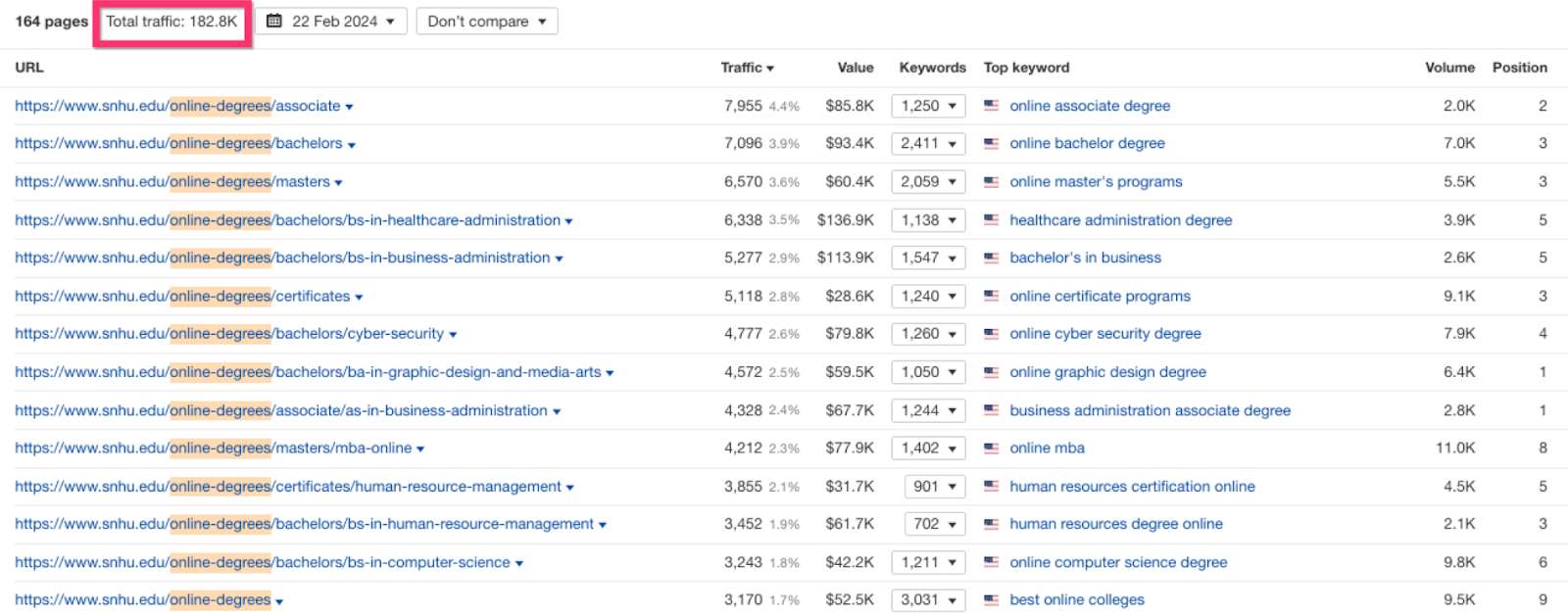
The total traffic to their blog is 802,000 per month.

In terms of value, the traffic to their program pages is far more valuable than the traffic to the blog. However, we must note that their blog helps a lot with their program pages to rank and get the traffic they’re getting today. This help comes in the form of building topical authority (another important concept in the SEO world – in short, it means making Google see you as a thought leader in the space because you’ve published content on the topic that is relevant to your program page), internal linking from the blog articles, and backlinks (authority) built organically.
1. If you are targeting specific keywords with your program pages, you want to make sure that you’re targeting the right ones. Google that keyword and if you’re seeing mostly program pages, then the keyword you’ve selected is a good one. If you’re seeing a mix of blog articles, listicles (best degrees type of article), then you might want to reconsider.
2. Make sure that you have a report that looks into the non-branded organic traffic to your program pages. This is the most important traffic that you can target with your SEO efforts, and you want to make sure the numbers you’re seeing are not impacted by branded searches (i.e. someone searching for your institution name + the program name)
While SNHU is known for its online programs, they do offer on-campus programs as well. Here we’re going to look at the SEO performance of their online vs. on-campus program pages.
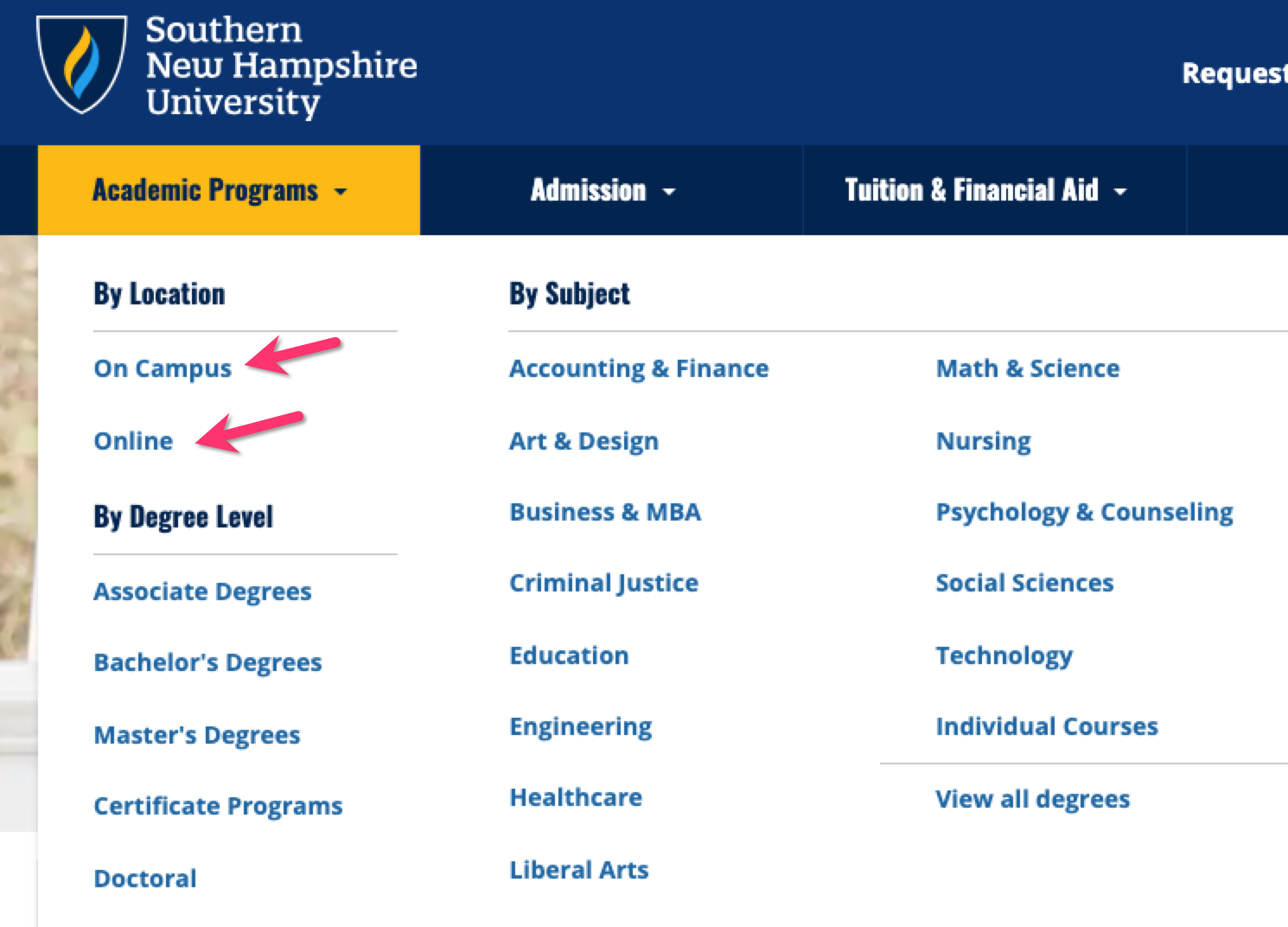
SNHU has 69 on-campus program pages indexed that are ranking and getting traffic. The total traffic for their 69 program pages is just over 2,000/mo.
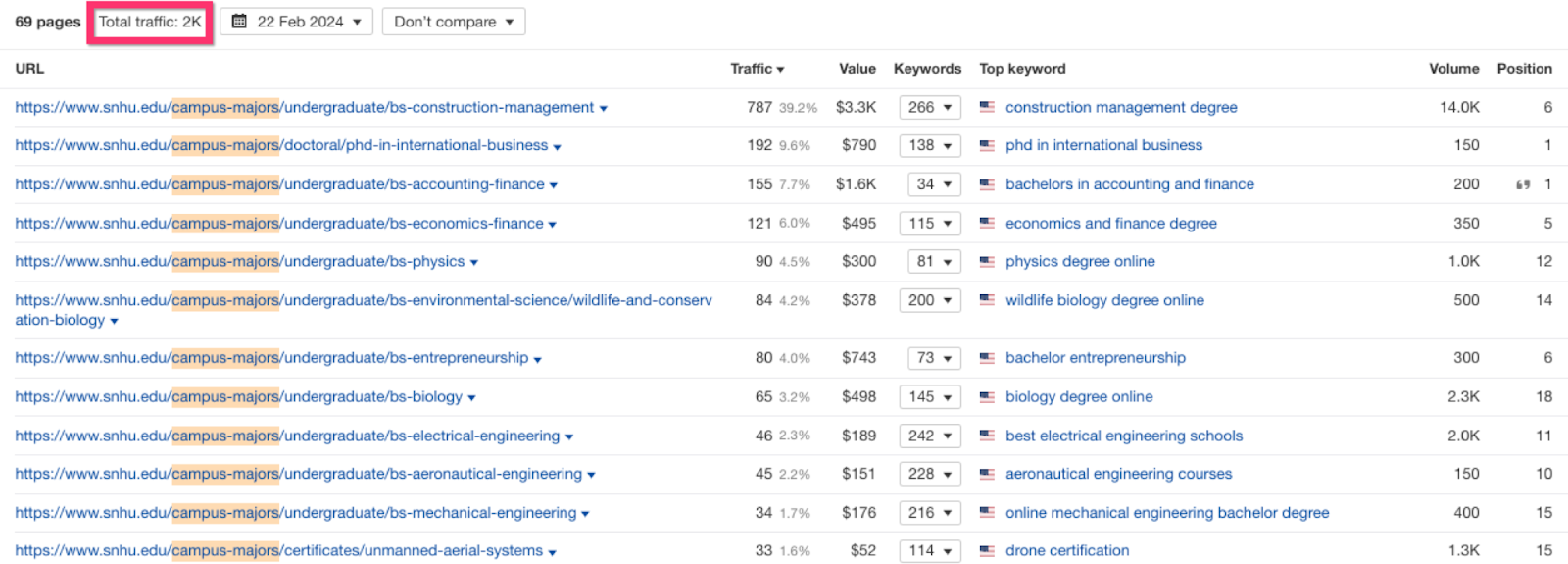
This is negligible compared to the traffic that SNHU gets from its online program pages.
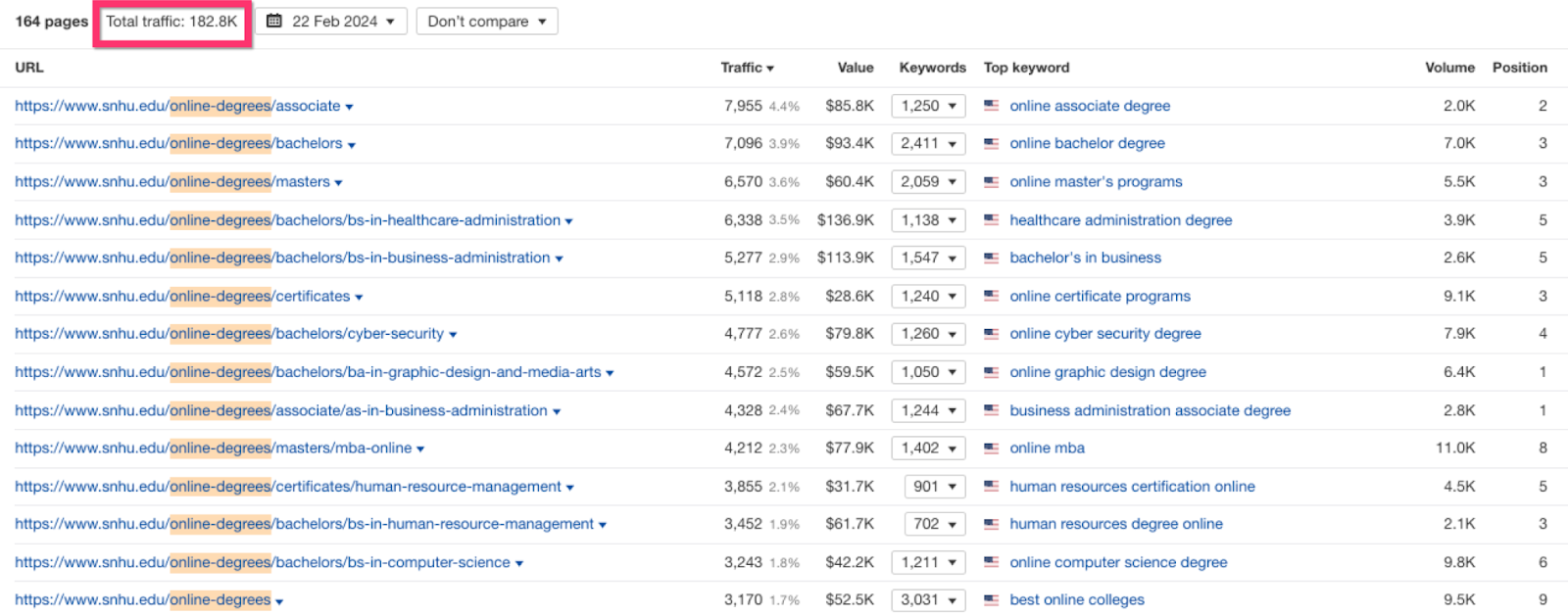
There are two reasons why the difference is so huge. The first one is search intent, which we discussed earlier. Even for program keywords where [online] is not mentioned, most of the results will contain online program pages. This is happening because Google has determined that these results would be more relevant to the majority searching for that program.
The second reason is that online programs have more search demand vs. on-campus programs. There are more keywords that contain [online] in the query than keywords without [online]. If you have a program page that is targeting [online] like SNHU does, and your page is performing well, then you get more traffic than you would if you were targeting on-campus.
Another reason would be that on-campus programs are location-specific, which limits the number of people who could go there, and the best keywords to target would also include the location, and these keywords would have way fewer people searching for them than a general keyword.
This is where we get technical. A good technical SEO foundation means that Google will be able to find all the pages on your site and see all the important content on those pages. Other important technical SEO considerations also include things like website speed, UX/accessibility, website architecture, and more.
We crawled the SNHU website to better understand their technical SEO setup, and here’s what we learned:
This is a good thing. Ideally, you only want pages that are worth ranking to be indexed in Google’s search results. Usually, when we’re doing SEO audits, we see higher ed. websites with thousands of pages, most of which don’t serve the marketing purpose of the site.
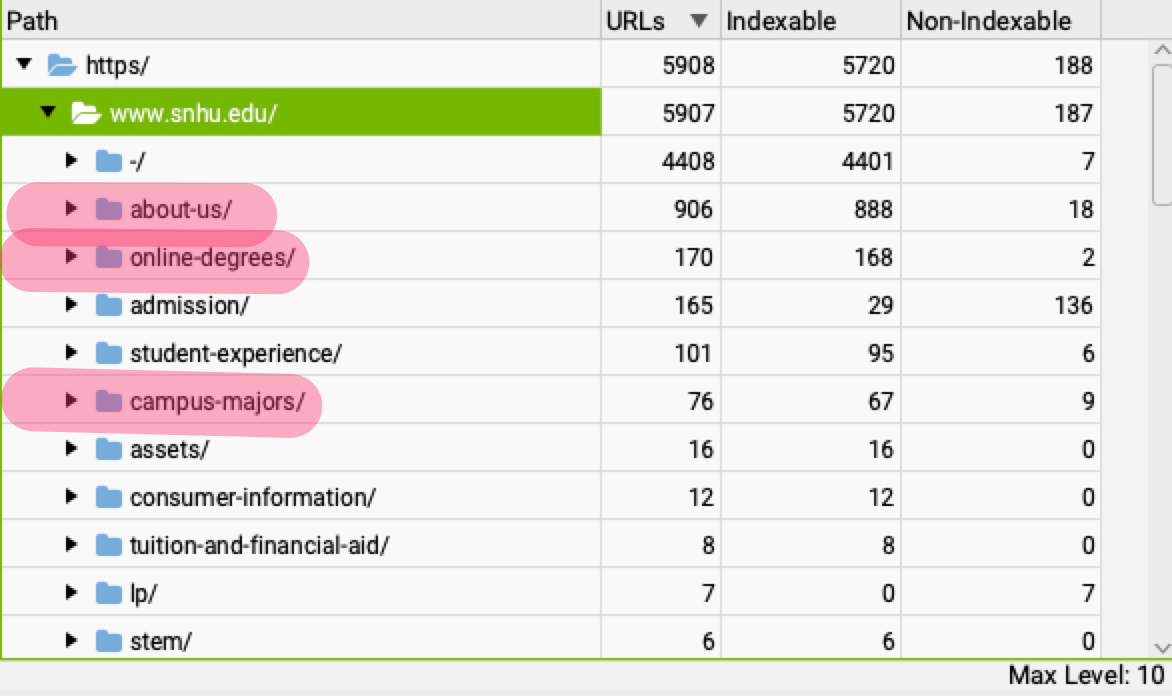
We understand that a lot of these pages must exist and be indexed, but what we usually find when working with our higher ed. partners is that a significant % of these pages can either be moved to a subdomain or removed altogether.
SNHU’s setup works great for their SEO strategy. Their main site www.snhu.edu serves mainly as their marketing site, and its main goal is to generate demand for their program pages.
The reason why we look at what’s indexed is that it impacts how Google sees our site. They look at all the indexed pages, the quality of these pages, and what these pages are about to better understand what the site is about. If we’re sending mixed signals to Google, then we could risk our most important pages not achieving their potential in the search results.
Crawl depth looks at how many clicks it would take Google to find a page if the starting point is the homepage. The closer a page is to the homepage, the more important it is perceived to be by Google.
In SNHU’s case, most of the pages are 2-3 clicks away from the homepage, which is ideal.
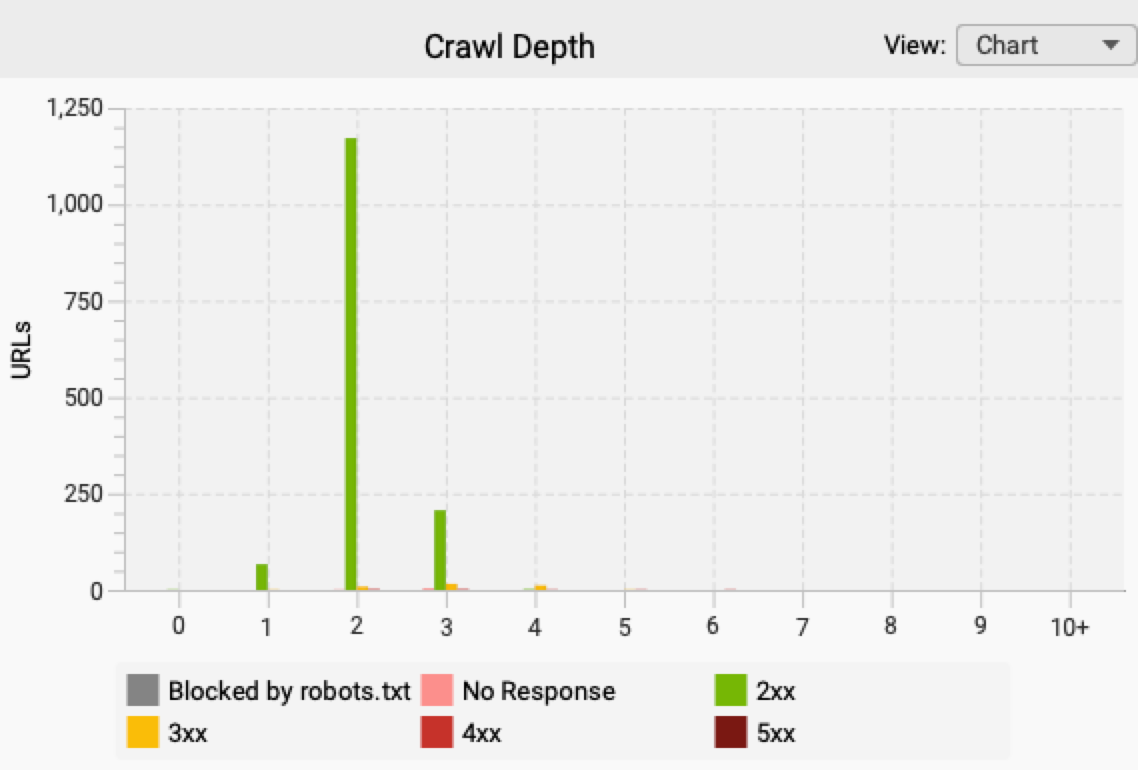
They are achieving this thanks to their HTML sitemap, which is linked in the footer.
1. Ideally you want to do a Technical SEO audit at least twice a year. The website changes almost daily and things break. You want to make sure that Google is able to find, index and rank all the pages on your site. If Google can’t find your pages, they won’t be able to show them to the users who are searching for them.
2. Beware of the ‘SEO Audit Tools’ – they will list you hundreds of issues, but most of these issues are going to be a waste of time and resources if you work on them. A good Technical SEO audit is one that has the context (what are our goals) and highlights the most important issues that will have an impact if fixed. Fixing 10 broken links or writing alt-tag text in images is great for accessibility, and we recommend you do it, but it’s not going to help with your SEO.
3. Do a specific check to make sure your important content is not shown using JavaScript, and if its shown, then you’re offering a pre-rendered version of it (HTML) to Google. Otherwise, Google won’t see it and your pages will hurt as a result (check if you have a ‘Program Finder’ that is interactive, that is most likely being shown using JavaScript and Google is not seeing any of these links).
We look at two things when doing a quick analysis of the backlink profile: the number of referring domains (how many websites are linking back to SNHU.edu) and the number of backlinks (the total times these websites are linking back to SNHU.edu).
In SNHU’s case, they have 11.5k referring domains, linking back a total of 124k times.

These numbers look great but they can be a bit misleading. Most of the SEO platforms/tools that we use will report on the total number of backlinks. However, we know that Google doesn’t treat all backlinks as equal and there are different factors that go into making a good backlink. Ahrefs (the SEO platform we use) has a neat feature that allows you to filter just the “Best links” – and what it does is that it removes a lot of irrelevant, low-quality links from spammy websites.
When we do this filtering, we see that SNHU has a total of 1,290 good backlinks from the likes of The Guardian, El Pais, Business Insider, Today, and more.
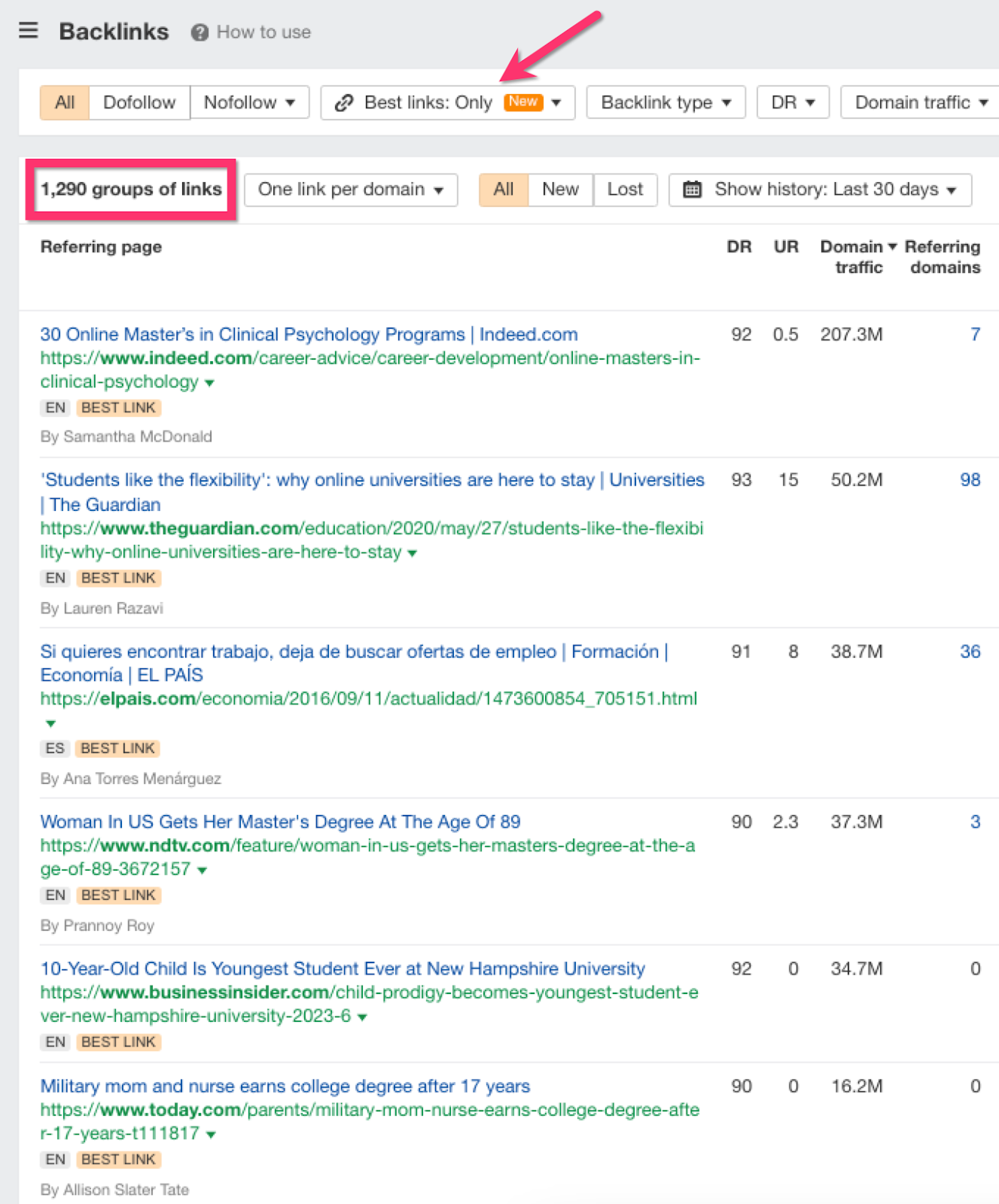
These are the backlinks that make the difference, and if we’re competing with SNHU, we’d look at beating this number and not the total number of backlinks/referring domains.
Diving deeper into this analysis, we see that apart from the homepage (which is usually the most authoritative page and has the most backlinks), the pages that have the most backlinks are blog articles. This is another side benefit of having a blog and writing content; it allows you to attract organic links passively, builds your website and program page authority, and helps with rankings.
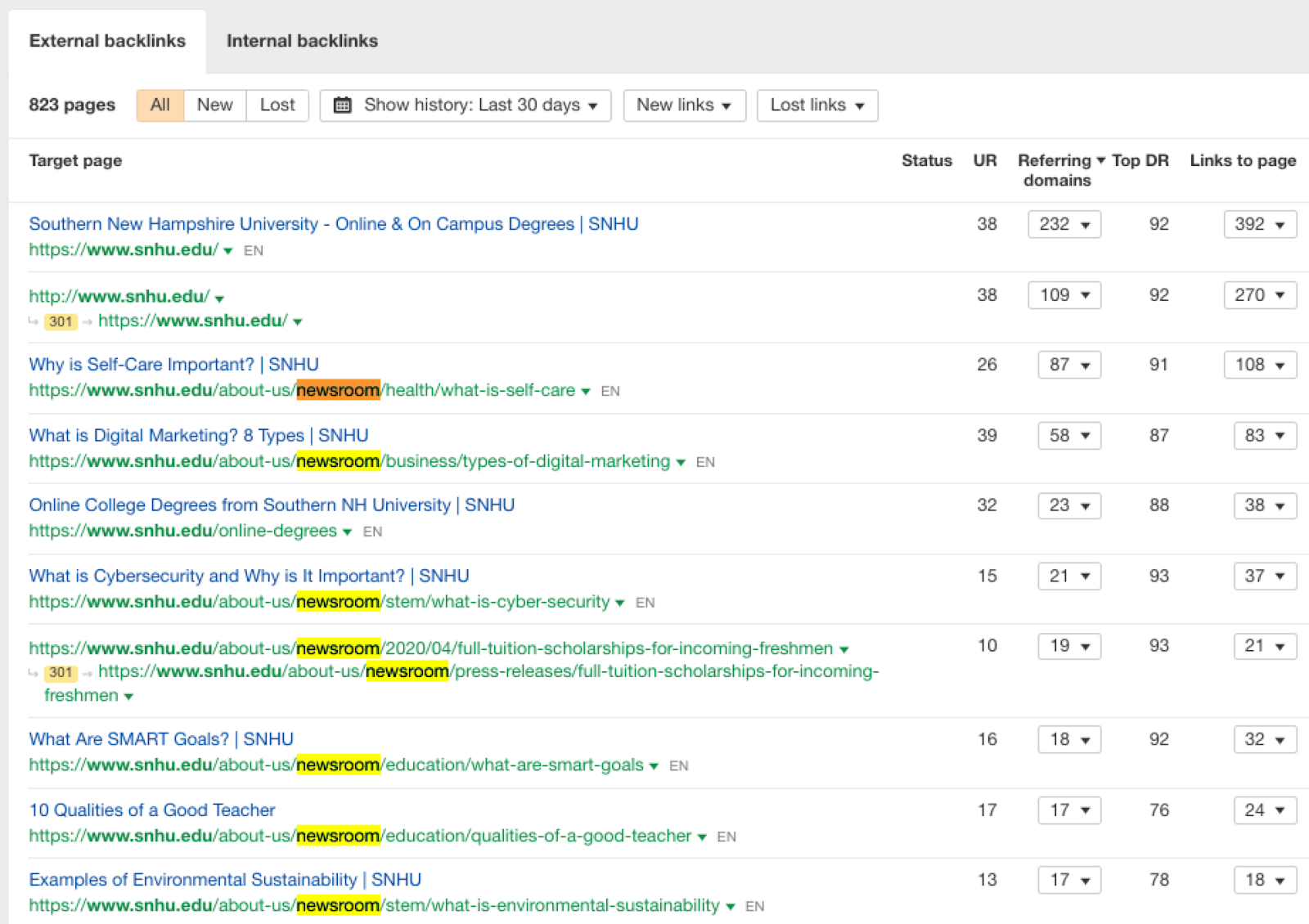
One area where SNHU has lots of room for improvement is their backlink profile to the program pages. When we look at the report of just program pages, we see that most of their program pages have only a few referring domains.
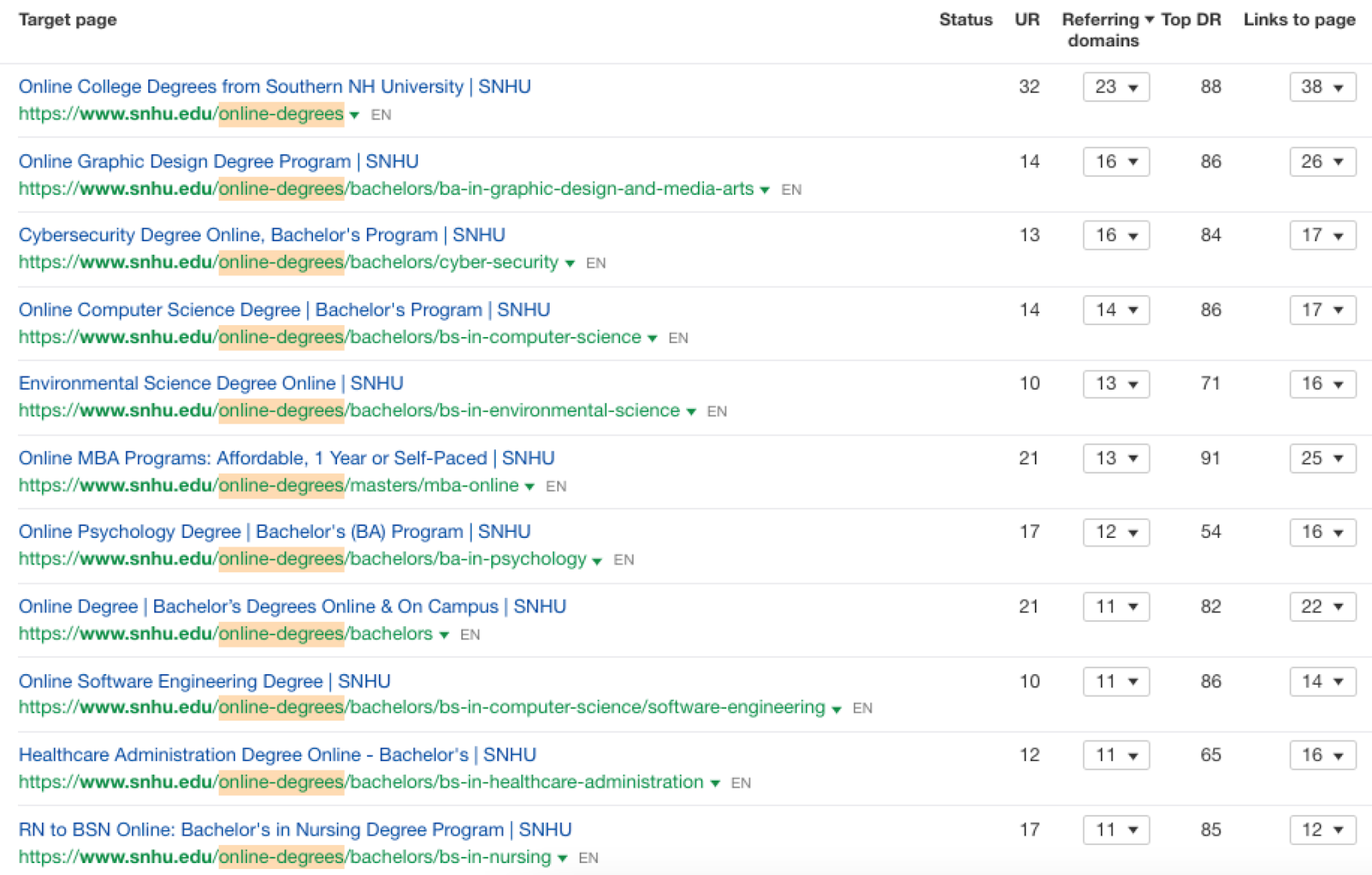
Improving this aspect of their SEO strategy will allow them to break into the first positions for thousands of keywords where they are currently ranking in the top 3 or top 5 positions.
When we talk about competition in SEO, we don’t mean your usual traditional competitors. We mean other websites that are competing for the same keywords your target audience uses to search for the programs you have to offer.
In SNHU’s case, we see the likes of ASU, WGU, Franklin University, and National University who are also ranking for the same keywords as SNHU, and then we have Coursera, the biggest competitor in terms of traffic and traffic value.
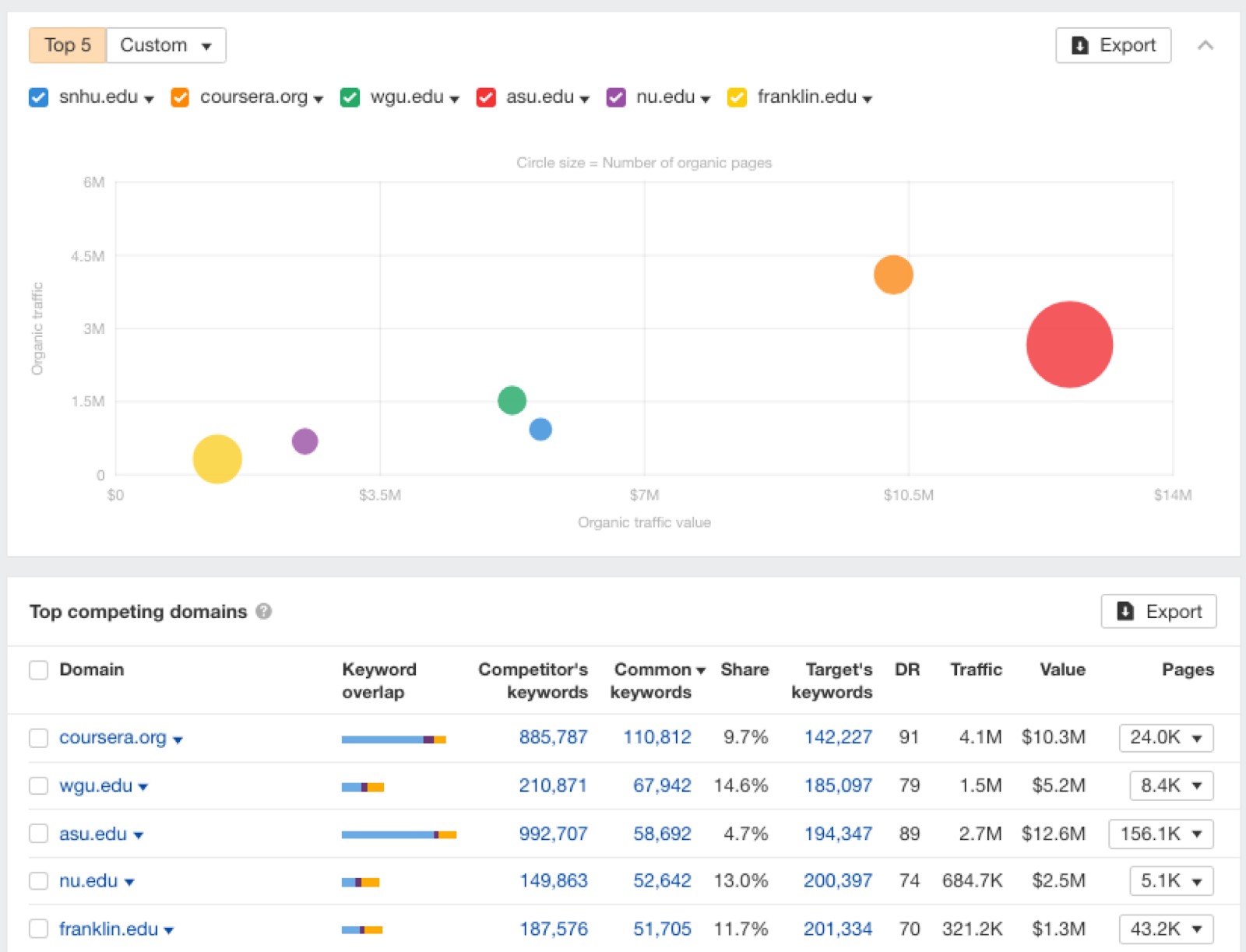
Something to note about the data shown above is ASU’s traffic value. What this means is that even though it’s getting less traffic than Coursera, most of the traffic is likely from its program pages, hence the higher traffic value.
Looking at SNHU’s competitors shows that there’s room for improvement for them. They are doing quite well with the traffic that their blog is providing, and their program pages are performing well, but they’re struggling to win the top spots for their target keywords. If that were to happen, their traffic and traffic value would increase significantly.

Chief Strategy Officer, Co-Founder
Granit is the Co-Founder & Chief Strategy Officer at Manaferra.
Granit is the Co-Founder & Chief Strategy Officer at Manaferra.